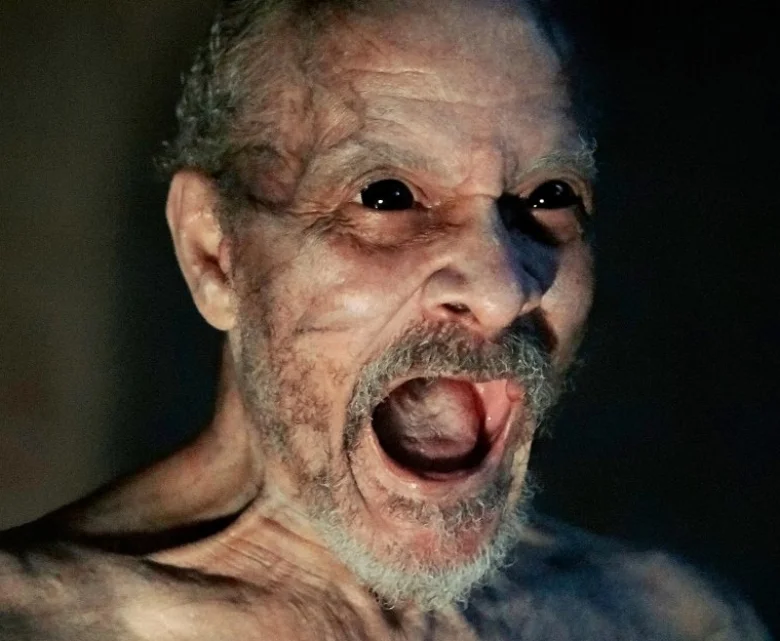It Comes At Night, a haunting film about fear itself
By Liam Lacey
A horror film haunted by ideas, It Comes At Night, from sophomore director, Trey Edward Shults (Krisha), treats a clichéd predicament of survivors in a cabin under threat of a viral menace with taut craft and a timely political resonance.
Along with the genre elements -- the anxious point-of-view Steadicam shots, the thundering percussive score and shock scares -- this is a chamber drama with the subject of fear on its mind.
This sort of thing comes at night
Because there is no electricity or media from the world outside. both the characters and viewers are often left in the dark, or at least, in ashen twilight, but whatever is out there is seriously contagious. In the opening scene, a sick old man is carried from a plastic-sheet covered room into a yard next to a boarded-up house in a wheelbarrow, shot in the head and incinerated. The executioner is his son-in-law, Paul (Joel Edgerton); his accomplice, the man's daughter, Sarah (Carmen Ejogo) and the traumatized witness, their 17-year-old son, Travis (Kelvin Harrison Jr.)
The three survivors, along with the family dog, Stanley, live in a state of military high-alert. No one can leave the house alone, and never at night. The sole entrance to the house is a red door which leads to a long corridor, lined with framed pictures of former family members, and, in place of a biohazard sign, a reproduction of Peter Breughels' 16th-century painting, The Triumph of Death. a panoramic depiction of a gleeful army of skeletons slaughtering humanity, inspired by the painters own experience of plague.
One night, Paul captures a would-be intruder. His name is Will (Christopher Abbott), and he says he's seeking for water for his wife and young son, who are hiding in the woods. Paul ties him up to a tree and interrogates him for a day (there's an interesting echo of Edgerton's role as an interrogator in Zero Dark Thirty). Eventually, Paul decides to let Christopher live, and goes with him to the woods to bring back his family, goats and chickens. At Sarah's urging, the two families agree to share the house, with Paul laying down the rigid communal rules.
Travis, the teenager, is awkwardly attracted to Will's free-spirited wife, Kim (Riley Keough) and fond of her toddler son, Andrew (Griffin Robert Faulkner). The teen begins to hide in the attic to eavesdrop on the new couple. He has ghastly, sometimes erotic, bedroom invasion dreams. Perhaps the most unsettling moments take place through conversations with his father, across the kitchen table, as the patriarch strives to ensure that the contagion outside won't leak in.
What the "It" of the It Comes at Night is, remains open to interpretation: The drama could be about old-fashioned Freudian repression, or an evolutionary conundrum about the competing urges for co-operation and dominance, But one detail seems worth special attention.
The family is bi-racial, the father white and mother and son, black. Race is never mentioned by the characters and initially, this looks like an example of progressive casting. But in a movie about a totalizing fear of others, and especially in context of the film's climactic scene, a colour-blind interpretation doesn't hold up.
Although it was shot a year ago in the summer of 2016, It Comes at Night, works as a compelling parable of Trump's America, with its gated communities and walled borders where paranoia destroys what is supposed to be cherished. As J.R.R Tolkein said of The Lord of the Rings and its relation to the Second World War, it's not allegorical, but it is applicable.
It Comes at Night. Written and directed by Trey Edward Shults. Starring: Joel Edgerton, Carmen Ejogo, Kelvin Harrison Jr., Christopher Abbot and Riley Keough. Starts Friday at Cineplex Yonge-Dundas, Cineplex Yonge-Eglinton, Cineplex Yorkdale and Market Square.
Liam Lacey
Liam Lacey is a former film critic for The Globe and Mail, as well as contributor to various other media outlets over the past 37 years.. He recently returned to Canada from Spain because he forgot about the weather


